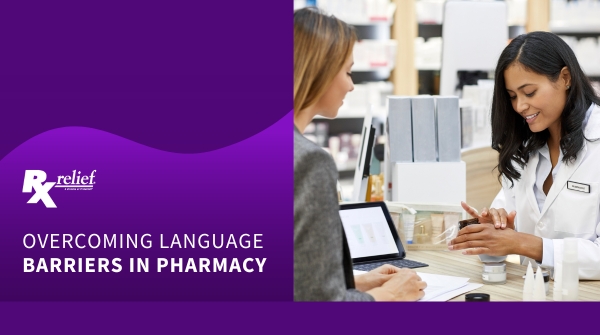Overcoming Language Barriers In Pharmacy

Overcoming language barriers in pharmacy is essential for providing quality healthcare to patients from diverse linguistic backgrounds. Effective communication between pharmacists and patients is crucial for accurate medication dispensing, understanding medication instructions, and addressing any concerns or questions. Here are some strategies to overcome language barriers in pharmacy:
Bilingual Staff
Hiring bilingual pharmacy staff who can speak multiple languages commonly spoken by the local community can greatly enhance communication. Having staff members who can speak the patients’ language helps to bridge the gap and ensures effective communication during consultations.
Translation Services
Using professional translation services can be an effective way to overcome language barriers. These services can provide on-site or over-the-phone interpreters who can help translate conversations between the pharmacist and the patient accurately. Pharmacists can also use translation tools and applications to communicate important information in the patient’s language.
Multilingual Written Materials
Creating multilingual written materials, such as medication labels, prescription instructions, and patient education materials, can facilitate understanding. Translating important information into multiple languages ensures that patients can read and comprehend the instructions associated with their medications.
Visual Aids and Pictograms
Supplementing verbal communication with visual aids and pictograms can be helpful for patients with limited language proficiency. Using pictures or diagrams to explain dosage instructions, side effects, and medication administration techniques can enhance comprehension and minimize miscommunication.
Cultural Sensitivity
Understanding and respecting cultural differences is crucial when overcoming language barriers. Being culturally sensitive allows pharmacists to adapt their communication style and approach to accommodate diverse cultural norms and preferences. It helps to create a comfortable environment where patients feel valued and understood.
Patient Education
Investing in patient education programs can empower individuals to take an active role in their healthcare. Providing educational sessions in multiple languages can improve patients’ understanding of their medical conditions, medications, and potential side effects. This knowledge can lead to better medication adherence and health outcomes.
Training and Development
Ongoing training for pharmacy staff on effective cross-cultural communication can enhance their ability to overcome language barriers. These training sessions can focus on active listening, non-verbal communication, and building rapport with patients from different linguistic backgrounds.
Use of Technology
Leveraging technology can be beneficial in overcoming language barriers. Pharmacies can use translation apps, teleconferencing tools, or even online chat services to communicate with patients in their preferred language. These technological solutions can facilitate real-time communication and provide accurate translations.
Collaborations and Partnerships
Building partnerships with community organizations, cultural centers, or local language schools can help pharmacies connect with interpreters or language resources. These collaborations can provide a network of support and enable pharmacies to offer language services to patients more efficiently.
Feedback and Evaluation
Seeking feedback from patients on their communication experience can identify areas for improvement. Regularly evaluating the effectiveness of language barrier solutions used in the pharmacy helps in refining and enhancing communication strategies.
If you are an employer looking for pharmacists, Rx relief is ready to help you.
We are one of the nation’s leading pharmacy placement firms. Rx relief has received Best of Staffing awards from both clients and talent. Find out what Rx relief can do for you. Give us a call today.



